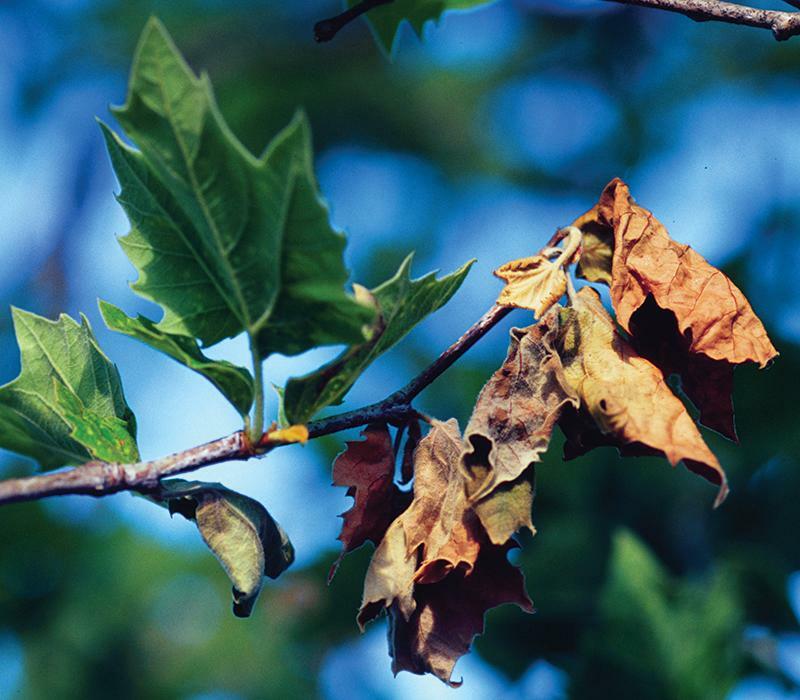Sycamore anthracnose is a common fungal disease that affects sycamore trees, causing unsightly damage and weakening the tree’s health. Understanding this disease, its life cycle, and effective treatment options can help save the health and beauty of your sycamores. Read on for an overview of sycamore anthracnose, its symptoms, and ways to manage and prevent this tree pest and disease.
What is Sycamore Anthracnose?
Sycamore anthracnose is a fungal disease caused by Apiognomonia veneta. This pathogen primarily affects sycamore species, especially the American sycamore (Platanus occidentalis) and London plane tree (Platanus × acerifolia). The fungus thrives in cool, wet spring conditions and spreads via spores that infect young leaves, shoots, and bark.
While the disease rarely kills trees, it can significantly weaken them over time, making them more vulnerable to other pests, diseases, and environmental stressors. Recognizing and addressing the disease early is important for maintaining tree health and safety.

Signs and Symptoms of Sycamore Anthracnose
- Leaf spots and blotches: Irregular, brownish lesions appear on leaves, often along veins.
- Defoliation: Premature leaf drop is common, especially in the spring.
- Witch’s Brooms: Abnormal growth may occur where many twigs arise from the same point, creating a “witch’s broom” appearance.
- Cankers: Sunken, dark lesions may form on twigs and branches, potentially girdling and killing smaller limbs.
- Delayed leaf-out: Trees may leaf out later than usual, with sparse foliage.

Life Cycle of the Anthracnose
- Overwintering spores: The fungus survives the winter in fallen leaves and infected twigs.
- Spring infection: During cool, wet weather, spores become active and spread to young leaves and shoots via wind and rain.
- Lesion development: Infected tissue develops visible symptoms, such as spots and dieback, as the fungus grows.
- Spore production: The fungus produces additional spores, continuing the infection cycle throughout the growing season if conditions remain favorable.
Sycamore Anthracnose – Treatment
Effective treatment for sycamore anthracnose combines cultural practices with targeted fungicide applications. Main options include:
- Phosphorous acid fungicides: These systemic fungicides help strengthen the tree’s natural defenses against the fungus. Regular applications during high-risk periods (spring) can reduce disease severity.
- Tree Growth Regulators (TGRs): These treatments slow shoot elongation, promoting more robust and disease-resistant growth while improving the tree’s ability to allocate energy to defense and recovery.
- Trunk injection of Arbotect: Arbotect is a specialized systemic fungicide that offers long-term protection against anthracnose. Applied through trunk injection, it distributes throughout the tree’s vascular system, targeting the pathogen directly.
When is the Best Time to Treat Your Sycamore Trees
The best time to treat sycamore anthracnose is during the early spring before or as buds begin to break. Applying fungicides at this stage prevents initial infection and reduces the spread of the disease throughout the growing season. Trunk injections like Arbotect are most effective when applied in the fall when trees are still leafed out to maximize absorption and protect next season’s growth.
Sycamore Anthracnose – Prevention
- Sanitation: Remove and destroy fallen leaves and infected twigs in the fall to reduce overwintering fungal spores.
- Pruning: Regularly prune out dead or infected branches to improve airflow and limit disease spread.
- Watering and mulching: Maintain tree vigor through proper watering during dry periods and applying mulch to conserve soil moisture and regulate temperature.
- Site selection: Plant sycamores in well-drained areas with good sunlight exposure to reduce moisture levels that favor the fungus.
- Resistant varieties: Consider planting disease-resistant sycamore cultivars when adding new trees to your landscape.
Need Help with Sycamore Anthracnose?
At A Plus Tree, we specialize in diagnosing and treating tree diseases, including sycamore anthracnose. Our expert arborists use advanced tools and techniques to treat and protect your trees. If your sycamore trees show signs of anthracnose or you want to create a proactive tree care plan, contact us today!





